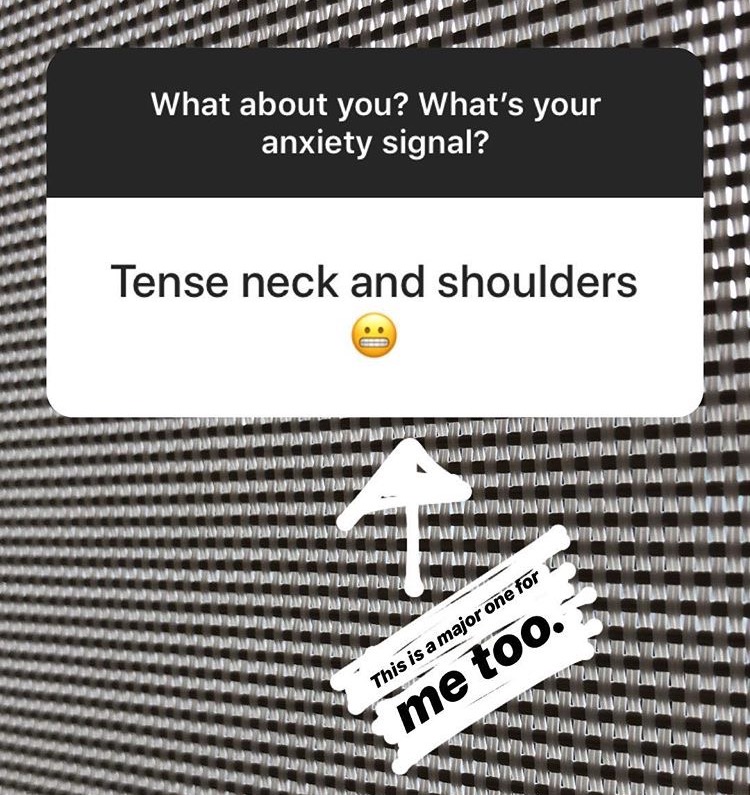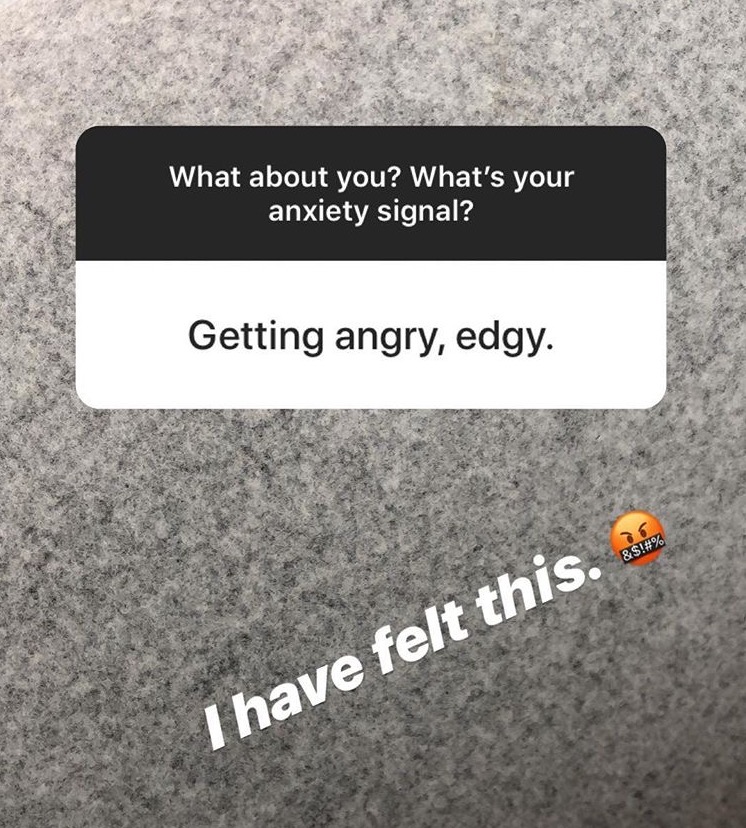What Are the Most Common Symptoms of Anxiety?
I’ve begun to ask questions about anxiety on the Instagram Beautiful Voyager channel, and the results are eye-opening. Here is a recent question I asked my fellow beautiful voyagers:
I asked about “anxiety signals",” but that was just my way of asking people what their symptoms are. I think of my physical symptoms as a signal of what is happening internally.
Since the moment I found out that I have generalized anxiety disorder, I’ve been tuned in the role of physical pain and anxiety. I knew that I was a lifelong migraine sufferer (my mother remembers me holding my hand up to my head as a small child) who had terrible motion sickness and nausea. But learning about how anxiety exhibits different symptoms for different people fascinated me. Here are some of the most common symptoms of anxiety, as discovered through the Beautiful Voyager community.
Common Symptoms of Anxiety
Stomach and/or Digestive Pain
Stomach issues are part and parcel with anxiety. From irritable bowel syndrome to nausea to a “gurgling” stomach, our stomaches are often signals of something happening at a deeper level.
“Skating over issues” wasn’t a symptom I had heard before. I was fascinated because it made sense!
2. Clenched Jaw
Have you ever massaged that spot right next to your ear? The one where your jawbone meets your skull? You might be surprised to feel how much tension you hold in that one space. Jaw-clenching is a very common sign of anxiety.
3. Obsessive Chatter
Have you ever found yourself talking and talking, skittering from topic to topic, your mind roaming ahead of you? This could be a sign of anxiety. Though it’s not a physical symptom, tuning into the kind of behavior that points to anxiety can be a powerful part of connecting the dots for your own journey.
Next time, try to tune into what you’re really talking about. You might be surprised by what you find.
4. Stiff Neck
Even as a little kid, I would get the kinds of stiff necks that made me lift one shoulder up close to my ear. Sadly, it was no Peanuts-style dance move, but tense, ropey muscles that were trying to tell me something. I didn’t listen until I learned that stiff necks are a sign of anxiety.
5. Compulsive Eating
Compulsive eating is when you mindlessly stuff food into your mouth without connecting to your body or your feeling of fullness. It can also be a common sign of anxiety.
6. Moodiness
Have you ever found yourself angry for seemingly no reason? Or edgy in greater proportion than the situation called for? Since mood swings can be a sign of anxiety, spotting the symptoms can help you tap into what’s really bothering you when you’re in the middle of a mood swing.
Common symptoms of anxiety range from headaches, neck stiffness, and back pain to nausea, poor digestion (and trouble pooping). For some people, anxiety exhibits itself as mood swings, anger, or edginess. As you can tell from the list above, anxiety symptoms greatly vary from person to person. The first step toward understanding your own anxiety signals is to spot how varied they really are.






